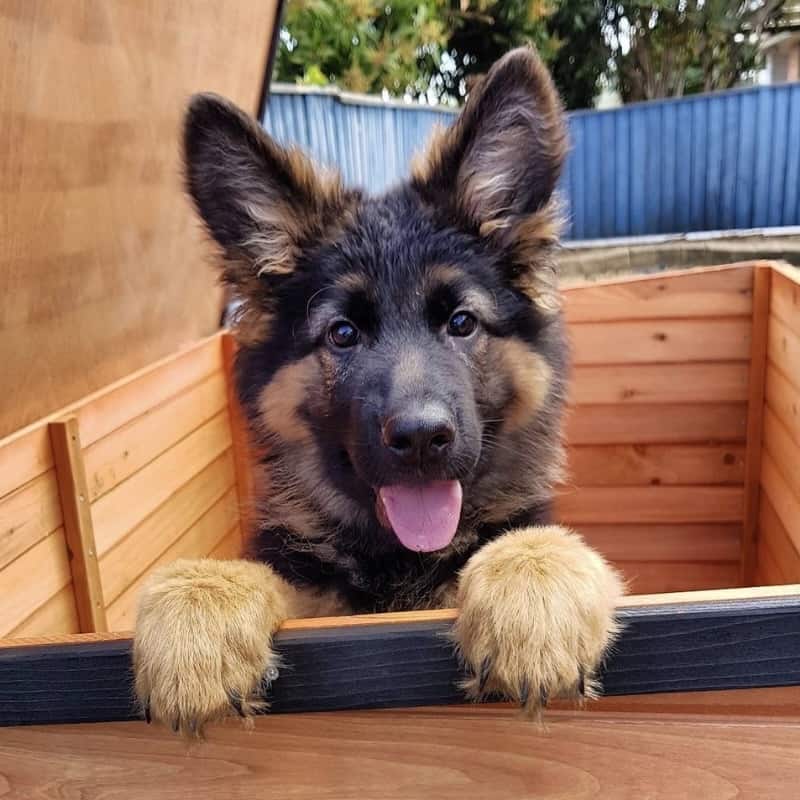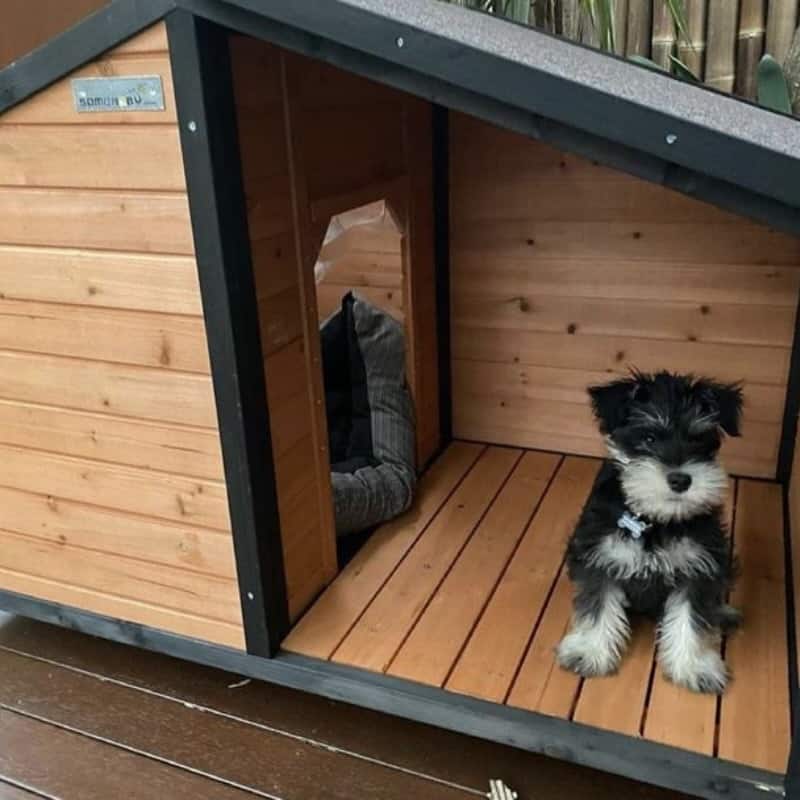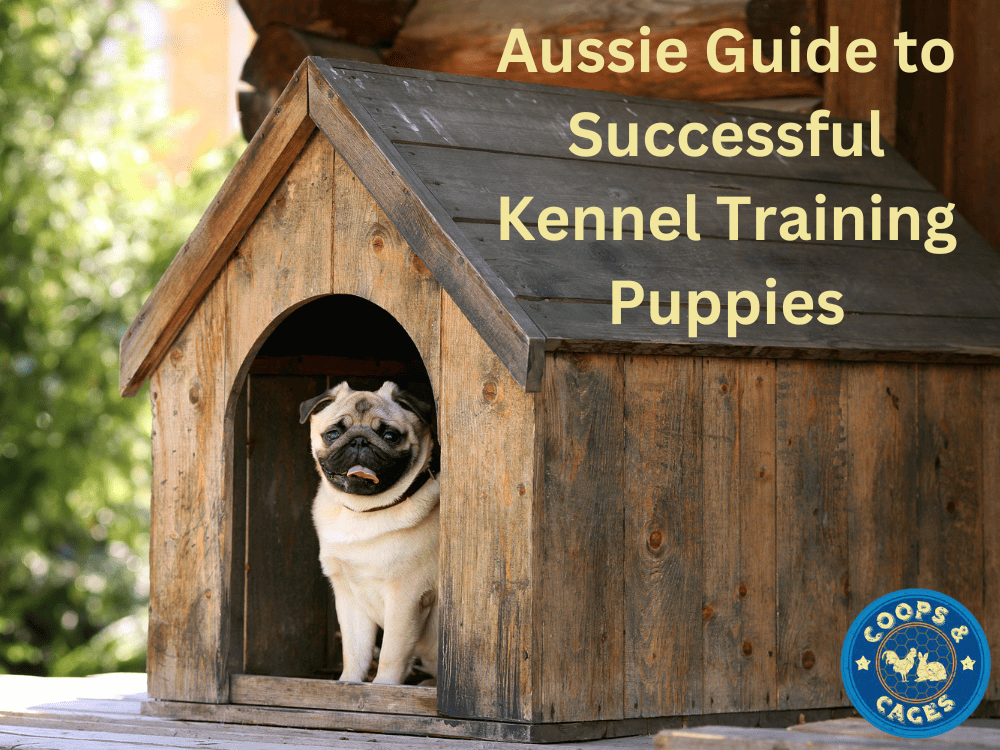Dogs, How To Do Things, Training
Aussie Guide to Successful Kennel Training Puppies
Preparing to welcome a new puppy into your home is an exciting adventure, and successful kennel training is a crucial part of this journey. Kennel training puppies can feel tricky at first. But don’t fret; we’re here to help!
In this journey together, we’ll unravel the secrets of picking the right kennels, making them cosy for our pups, and some foolproof steps to train them without breaking sweat or hearts.
We will also share some tips for overcoming those tough hurdles that could make us want to throw in the towel. Kennel training puppies can be a game-changer for pet parents. Join us as we demystify the process and share expert insights.
- Understanding the Basics of Kennel Training
- Choosing the Right Kennel for Your Puppy
- Making the Kennel Welcoming
- Step-by-Step Guide to Kennel Training
- Sleeping in the Kennel at Night
- Common Challenges in Kennel Training and How to Overcome Them
- Maintaining Kennel Training Consistency
- Tips for Keeping Up with Your Schedule
- Avoiding Common Mistakes
- The Role of Positive Reinforcement in Kennel Training
- Top Aussie Kennel Options
- FAQs in Relation to Kennel Training Puppies
- Jordan’s Wrap
Understanding the Basics of Kennel Training
Kennel training is a method used to help puppies get familiar with their new environment. Training your dog to use a kennel is pretty similar to the crate training process. Just like with a dog crate, it’s all about making them feel safe and comfortable in their own space.
This process can be particularly helpful in establishing routines and boundaries, making toilet training easier while reducing separation anxiety. In fact, when done right, kennel training can contribute significantly to your puppy’s overall well-being by providing them with their own cosy corner.
Contrary to popular belief, a kennel is not an imprisonment for your pup but rather a place of comfort and security. A well-planned kennel set-up, coupled with positive reinforcement techniques, will have your little mate viewing it as their den – an area where they feel secure and relaxed.
The success of kennel training depends largely on patience and consistency from you as an owner. Remember not to rush things; let your furry friend take their time getting used to the idea before starting any serious instruction sessions.
Choosing the Right Kennel for Your Puppy
Selecting a kennel that suits your puppy is essential. Size, material, and design are key factors to consider:
Size: It’s vital the kennel isn’t too large or tiny; it should be just right for your pup to rotate and rest easily. If it’s too large, your dog may struggle to stay warm in colder weather, whereas a kennel that’s too small can cause overheating in hot weather. Check out this handy kennel size guide from Somerzby here.
Material: The material of the kennel plays an important role in its durability and comfort. Wood is a popular choice due to its insulation properties but make sure it’s designed to protect from weather.
Design: The design should provide features like an opening roof, protection from the elements, and an easy to clean floor. A door large enough for easy access yet safe from weather and bugs will give you peace of mind.
Location: An often overlooked factor is location; if placing outdoors remember Australia’s weather extremes. Opt for designs with raised floors or roofs offering protection against sun and rain.

Making the Kennel Welcoming
Avoid the bare-boneseasy-to-clean look – making your puppy’s new house homey helps them adjust quicker. Comfy bedding, toys they love, and even an item carrying familiar scents can work wonders in helping them feel at home inside their new den.
Step-by-Step Guide to Kennel Training
Introducing your puppy to a kennel can be achieved with patience and positivity.
The key is to be patient and consistent while making sure the kennel training process remains positive for your furry friend.
Step One: The first step to kennel training puppies is to get them used to their new space. This isn’t a quick task, but patience and positivity can go a long way. Start by placing the kennel in an area where your puppy spends most of its time, such as a family room, outdoor patio or backyard.
Step Two: Allow your puppy to investigate the kennel at their own pace. You could even place some of their favourite food treats or toys inside to create a pleasant association. If the kennel is fitted with a crate door, keep this open for now.
Step Three: Once they’re comfortable going in and out on their own, you can start feeding regular meals inside the kennel. This will help create a positive association with the kennel.
Step Four: Gradually Increase alone time in the kennel start by leaving them in the crate for short time periods while you’re at home, gradually extending the time. Ignore whining and provide comfort items like a soft blanket to make the crate inviting.
Praise them when they stay calm inside – that’s key to making this a positive experience. These same steps can also be used when crate training your pup to use a dog crate.
Sleeping in the Kennel at Night
Once they’re comfortable entering and exiting during daytime play sessions, you can encourage them to sleep there overnight. A cosy blanket or one of their favourite soft toys may make them feel more secure.
Common Challenges in Kennel Training and How to Overcome Them
Kennel training can be a bit tricky, but it’s not impossible. Here are some of the obstacles you may encounter when kennel training.
Your Puppy Doesn’t Want to Enter the Kennel
This is often because they see it as an unfamiliar space. Make sure their kennel feels like home by placing familiar items inside such as toys or blankets with your scent on them.
Your Puppy Whines When Left Alone
Puppies are social animals and may feel lonely when left alone. To help fix this, start leaving your puppy alone for short periods and gradually increase the duration over time. This method is known as desensitization.
The Puppy Relieves Itself Inside the Kennel
Avoid feeding your pup right before putting them in their kennels since pups usually need to relieve themselves shortly after eating.
Stick to a consistent schedule of feeding times followed by outdoor bathroom breaks. Remember that patience is key during this process. With love and consistency, these issues will eventually resolve.

Maintaining Kennel Training Consistency
Consistency is a cornerstone of successful kennel training. Without it, your puppy might get confused and the whole process can take longer than necessary.
To maintain consistency in kennel training, you need to follow a regular schedule. This includes consistent feeding times, playtimes, and toilet breaks. A well-structured routine can make all the difference because puppies love predictability.
Tips for Keeping Up with Your Schedule
The first step towards maintaining consistency is having clear expectations. Know what behaviour you want from your pup and reward them when they do the right thing. Remember that positive reinforcement goes a long way in teaching good habits.
But don’t just focus on rewarding good behaviour; also ensure there are consequences for bad ones too – but always keep it positive. No yelling or punishment – simply ignore them until they correct their actions.
Avoiding Common Mistakes
We all slip up sometimes, especially when we’re busy or tired. But remember: inconsistency can undo weeks of hard work. So even if it’s tempting to let your pup sleep outside their kennel ‘just this once’, resist.
This level of discipline will pay off as your furry friend learns how to behave appropriately within their new home away from home – their cozy little kennel.
The Role of Positive Reinforcement in Kennel Training
Positive reinforcement is a powerful tool for teaching your puppy to love their kennel. It’s all about rewarding good behaviour, making it more likely to be repeated.
To start, let your pup explore the kennel on their own terms. Whenever they approach or enter the kennel voluntarily, reward them with praise and treats. This helps associate the kennel with positive experiences.
Next comes feeding time – serve meals inside the kennel so that spending time there becomes part of the daily routine. This guide from Coops and Cages can give you some practical tips on how to do this effectively.
Persistent crying or whining should not be rewarded by letting them out immediately but ensure they’re comfortable before leaving them alone in there for extended periods as well.
Tips For Successful Positive Reinforcement
Rewards don’t always have to be food-based; toys, pats or even verbal praise could work just as well depending on what motivates your dog most.
Remember that timing is crucial: rewards must follow desired behaviours instantly so puppies make clear associations between actions and consequences.
Making The Kennel Part of Their Routine
The next stage is integrating their kennel into daily life. Start by feeding meals inside – food has such strong positive associations for dogs. You could also use treats or chews as incentives for spending time there voluntarily.
Praise goes a long way with pups, so always acknowledge when they’re doing well with verbal encouragement or pats. And remember: patience is key. Each dog learns at its own pace but given time and consistency, yours will come to see their crate as a cosy den where good things happen.
Top Aussie Kennel Options
When it comes to providing your beloved Australian pup with a safe and comfortable space, choosing the right kennel is paramount. Pet supply stores such as Coops And Cages offer a range of design choices:
Duplex: The Coops and Cages Duplex double-door dog kennel features dual doors and includes a removable divider, allowing you to create two separate spaces for your dogs. It is well-suited for smaller dog breeds such as Cavaliers, Jack Russells, and Pugs.
Cubby: The Cubby Dog House offers a sheltered space with a covered porch. Made from rot-resistant fir timber, it requires minimal maintenance for lasting use. The off-centre design adds extra wind and rain protection, keeping your dog warm and dry.
Cabin: Designed for medium to large dogs and puppies, the Cabin offers premium quality and easy assembly. The kennel includes a plastic curtain on the door to deter bugs and drafts, a removable floor for easy cleaning, and a convenient lift-up roof for effortless access.
Haven: The Haven Dog Kennel, both robust and simple to put together, serves as a top-quality option for medium to large dogs. Crafted with a strong and rot-resistant Fir timber frame, it includes an accessible door and additional under-floor supports for enhanced durability.
Den: The Den features a removable divider, allowing you to create separate spaces for two dogs or remove it for a larger area for a single dog. This premium kennel is constructed with a robust and rot-resistant Fir timber frame, it offers two open doors. Each door is equipped with a plastic curtain to deter bugs and prevent drafts.
FAQs in Relation to Kennel Training Puppies
What Is A Good Age To Kennel Train A Puppy?
Kennel training should ideally start when your pup is between 8 and 16 weeks old, during their key learning period.
How Long Does It Take To Kennel Train A Puppy?
Pups vary but generally, expect anywhere from one week up to a month for full comfort in the kennel.
How Long Does It Take For Puppies To Get Used To Kennels?
Making pups comfortable with their new digs can range from just days up to several weeks. Patience is essential here.
Is It OK To Let Your Puppy Cry In A Kennel?
Avoid letting them whinge too much; instead, make sure they associate the space with positive experiences right off the bat.
Jordan’s Wrap
Kennel training puppies is a game-changer – it lays down the foundation for everything else to come. Remember, choosing that perfect kennel? It’s not just about looks; size and comfort matter too!
Prepping pups by making them comfortable in their new digs before jumping into training is key. By following this step-by-step guide you will have your puppy trained to use their kennel in no time, without inducing tension or perplexity.
Consistency is king in this process while positive reinforcement keeps things fun and rewarding for both sides.
The takeaway here: Kennel training doesn’t have to be a struggle if you approach it with patience, persistence and heaps of love! Now go ace that puppy parenting like I know you can!



